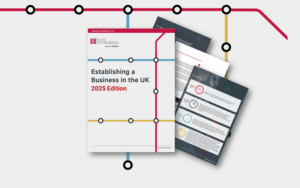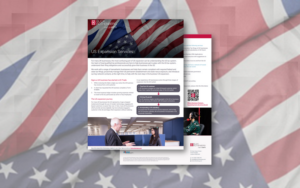The abolition of the non-dom tax regime – an American perspective on Trusts
In the US, trust structures form a common planning tool and are widely used
4 December 2024 | Authors: John Bull, Sonya Rees, Rachel Bentley
An American perspective on Trusts
In the US, trust structures form a common planning tool and are widely used.
What isn’t changing?
Broadly, where a UK resident US person is a beneficiary (but not settlor) of a US trust then there is no change. The UK taxation of benefits that individuals receive from a US trust is largely unchanged (provided the individual cannot avail themselves of the Foreign Income and Gains (FIG) regime, or transitional relief provided by the Temporary Repatriation Facility (TRF).
New opportunities?
The TRF can be used by American beneficiaries of US Trust structures where they are not the settlor. So, individuals may want to think carefully about requesting distributions from their US Trustees in the period 6 April 2025 through to 5 April 2028 which, while not solving a historic double tax problem, could reduce their UK tax exposure from as high as 38.4% or 45% to 12%.
What about existing structures settled by a US person resident in the UK?
Trust protections remain in play for a US person moving to the UK who is the settlor of a US trust. For the first four years of UK residence, where the settlor benefits from the FIG regime, then FIG arising within the US trust will be outside the scope of UK tax.
When the settlor subsequently ceases to qualify for the FIG regime, if the US trust is ‘settlor interested’ the trust protections will be lost. This is largely akin to the tainting provisions in operation through to 5 April 2025.
Such types of trust are commonly a grantor trust for US Federal Income Tax purposes. In such a scenario we broadly expect that the 2001 US/UK Income Tax treaty should provide relief from double tax. The economic cost of the loss of trust protections will likely be any additional UK tax due over and above the US grantor’s US Federal Income Tax exposure on trust income and gains.
For non-grantor trusts, we don’t expect such scenarios to be as common, but no doubt there will be some. One example might be a US trust structured as a completed gift for US Federal Estate tax purposes, where the settlor/grantor is UK resident but where the next generation are beneficiaries. For such a structure, any foreign income may still be protected from UK tax moving forwards, but realised capital gains will not be protected. Here the 2001 US/UK Income Tax treaty is less helpful, and there could be a material risk of double tax.
What about UK Inheritance Tax?
It is very common for a US person living in the UK to have settled an Excluded Property Trust prior to becoming deemed UK domiciled, with the primary purpose of that trust to provide UK Inheritance Tax (IHT) protection.
The good news is that trusts settled prior to 30 October 2024 are effectively grandfathered – there should be no UK IHT arising on the death of settlor if they are long-term resident in the UK. However, where the settlor is long-term resident in the UK, assets of the trust are within the scope of the relevant property UK IHT regime. This broadly provides that a maximum 6% UK IHT charge arises on every 10th anniversary of the trust, whenever the trustees make a capital distribution, and should the settlor cease to be within the scope of IHT in the UK.
This relevant property regime provides a stark contrast to the US Federal Gift and Estate tax position, where there is no equivalent for trust structures. Typically trust assets are either exposed to US Estate tax on death of settlor/grantor (and no charges thereafter), or exposed to US Gift Tax on transfer of assets into trust (and no charges thereafter).
Because there is no equivalent regime, there is no corresponding US tax charge to offset the UK IHT. Therefore, any UK IHT suffered is an unwelcome cost to trust structures.
It is possible that the 1980 US/UK Estate and Gift tax treaty can help here. This largely requires the US settlor to be US domiciled (and not a UK citizen) when the trust was funded, so is far from a perfect solution. Such a position is relatively untested in practice, having not typically needed to have been relied on until now.
What might individuals with existing structures consider?
For existing structures, the UK IHT exposure may be unpalatable for some. Short of leaving the UK, long-term resident settlors may consider winding up trusts if they no longer serve their original purpose.
The US/UK tax impact of winding up a trust will need careful consideration. If the settlor is still able to avail themselves of the remittance basis pre-6 April 2025, then the immediate UK tax impact could be minimal. If not, the TRF could be helpful if the trust is terminated in the period 6 April 2025 through 5 April 2028.
Would you like to know more
If you would like to discuss the impact of these changes, please get in touch with your usual Blick Rothenberg contact, or one of the team using the form below.
You can find out more about the non-dom changes on our dedicated page.
Contact us
You may also be interested in

Unlocking Growth: What the Government’s 2025 Industrial Strategy Means for the UK’s Creative Sector

A ray of hope for the Property Market: HMRC transaction data suggests recovery momentum













